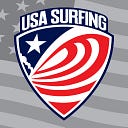
Sleep is the new competitive edge
Surfers and other elite athletes put in many hours training their minds and bodies for peak performances. Strength training. Cardio. Exercises to improve balance, increase reaction times, sharpen strategic thinking. Hydration. Nutrition to help build muscle and store the right amount of energy for competition day.

Increasingly restorative sleep is being added to this mix.
Tools like the Oura Ring are taking sophisticated, personalized measurements that provide valuable feedback about an athlete’s quantity and quality of sleep and the impact it has on performance.
Last fall after the Olympic Training Summit at BSR Surf Resort, athletes from USA Surfing and a few from USA Skateboarding began using the Oura Ring to help them better understand their health and performance
The Oura Ring’s built-in sensors measure skin temperature, heart and respiratory rates, among other metrics and provide athletes with a Sleep and Readiness score that can help calibrate training intensity and recovery.

Restorative sleep can provide a powerful competitive advantage for athletes across many sports. And the damaging consequences of poor sleep are well documented.
BENEFITS OF RESTORATIVE SLEEP
· Improved memory
· Lower blood pressure
· Faster reaction time
· A better mood
· 42 percent increase in hitting accuracy for tennis athletes
· Decrease in injury
· Improved immune function
DAMAGE FROM POOR SLEEP
· 11 percent reduction in stamina
· Perceived exertion increases 17–19 percent after thirty hours of sleep deprivation.
· A decrease in anabolic hormones, which promote growth and building, and an increase in catabolic hormones, which get involved in breaking down molecules to expend energy.
· Maximum bench press drops 20 pounds after four days of restricted sleep

Oura investor Chris Bennett talked with USA Surfing athletes about the unique challenges surfers face with non-stop international travel schedules and shared some tips for better understanding their sleep needs and increasing restorative sleep.

Bennett’s advice was spot on for surfers’ lifestyle and training regimens. We’re sharing it with his permission here:
GENERAL TIPS
· Expose yourself to sunlight early in the day
· Maintain a consistent schedule
· Blackout your bedroom and keep it cold (65–68 degrees)
· Block out blue light after sunset, using blue light glasses or turning off screens
· Save weight training for late afternoon
· No exercise two-to-three hours before bed. If you do, take a cold shower or plunge.
· No big meals within two hours of bedtime.
· No fluids at least one hour before bedtime
· Adopt a pre-sleep routine to wind down
PRE-FLIGHT
· Request a window seat, so you can lean your head against the window to sleep.
· Use a J-hook travel pillow for maximum comfort and flexibility for aisle and center seats
· Use earplugs or ear buds combined with noise cancelling
· Use a full wraparound sleep mask
· Study up on supplements tailored to your body, which could include Reishi extract
COMBATTING JET LAG
· As soon as you can after landing, get grounded by putting your bare feet in sand, grass or even concrete (Just like in Die Hard.)
· Exercise as soon as possible to normalize your circadian rhythm and sleep
· Avoid caffeine and alcohol enroute to your destination
· Boost melatonin dose the first night and taper off on the second night.
· Drink lots of water
· Take Curcumin before and after flying to constrict inflammation before the plane takes off
· The morning after you land, get in the sun ASAP (or use high tech human charger or re-timer to blast your nostrils and ears with light)

The growing body of knowledge about the role recovery and sleep data play in maximizing performance is providing a competitive edge in all Olympic sports.

As surfing prepares for the spotlight of the world’s largest sporting stage, Popular Science documented surfing’s shift from a laid-back, go-with-the-flow mindset to one shaped by innovations in data analysis, physiological testing, and technology.
Sleep data provides surfers and coaches important information about when surfer’s bodies are prepared to take on bigger training loads and when it’s best to back off and emphasize recovery.
The results are improved mental and physical performances, reduced injuries, and more time in the water doing what surfers love. We’re all on board with that result!
